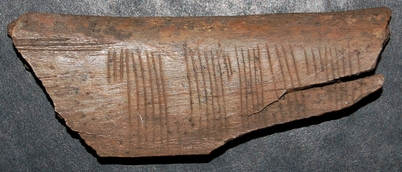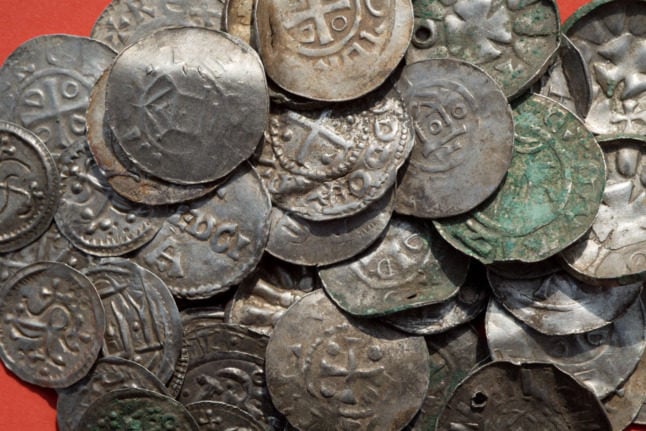VIKINGS
Coded rune is 900-year-old Viking Valentine
More than 900 years ago, Vikings used coded runes to send frivolous romantic messages to each other, a researcher at the University of Oslo has discovered, with one message, written on a piece of bone in Sweden, simply saying, "Kiss me".
Published: 13 February 2014 08:09 CET

"Kiss me," reads this message, written in cipher runes on a piece of bone found in Sigtuna. Photo: Jonas Nordby
Jonas Nordby,a PhD candidate at the University of Oslo, has studied more than 80 coded runic inscriptions, along the way cracking the Jötunvillur Code, a secret rune alphabet which had confounded rune experts for decades.
"Many believe the Vikings used cryptography to hide secret messages. But I think the codes were used to joke around and to learn runes, rather than to communicate," Nordby told Forskning, a Norwegian science website. "We have little reason to believe that rune codes were used to hide sensitive messages. People often wrote short, everyday messages."
The "Kiss me" rune, found in Sigtuna, Sweden, is written in cipher runes, which runologists have long been able to read. But nine of the 80 messages Nordby studied were written in the previously impenetrable Jötunvillur Code.
Nordby's breakthrough came when he realised that one inscription contained the names of two Viking youth, written first in ordinary runes, and then in Jötunvillur.
"It's like solving a puzzle," Nordby said. "Gradually I began to see a pattern in what was an apparently meaningless combinations of runes."
He realized that Jötunvillur worked by replacing each standard rune with a new symbol corresponding to the last sound in the rune, for example swapping the U-rune 'Urr' with a symbol corresponding to R.
As several rune symbols end with the sound 'R', however, the code is practically indecipherable, leading Nordby to conclude that it was used as a way of learning and practising runes rather than as a way of communicating.
"I think it was something you practised while learning runes," Nordby told Forskning. "If you learned to read and write, you would also have learned codes."
An inscription found in Tønsberg from around the year 1250-1350, reads, "I and Steingrim wrote much between us, because I wanted to learn runes", followed by a coded message.
The inscription "Interpret these runes" is very common, as are fragments of wood used as exercise books, with the same runes practised over and over again.
Henrik Williamson, Professor of Scandinavian Languages at Sweden's Uppsala University, commended Nordby for his "important discovery",
"Personally I think Jötunvillur is a stupid code, because those who created it have used a system that makes it so difficult to interpret," he added. "It is annoying when we can not read it."
Url copied to clipboard!


 Please whitelist us to continue reading.
Please whitelist us to continue reading.
Member comments